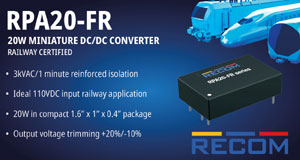While autonomous technology, the electric vehicle (EV) and increasing expectations of environmental sustainability and fuel economy change the nature of the automotive industry, CFD (Computational Fluid Dynamics) remains the heart of these technologies: an instrument of great power that allows an engineer to model, analyse and optimise fluid flows inside and outside of automobiles. This article discusses, in detail, the latest developments in automotive CFD, where CFD is applied, and in what new ways the scope is being stretched, and also delves on the key contribution Cadence has made toward breaking the frontiers of automotive simulation and design Cadence being the world leader in computational software.
Why CFD is Important in Automotive Design
CFD involves the numerical simulation of fluids flows by employing mathematical models and computational algorithms. In the automotive sector, CFD is used extensively in the modeling of airflow over the vehicle body, thermal management systems, engine cooling, aerodynamics, underhood airflow, HVAC etc. Being able to recreate complex fluid behaviors virtually offers a lot of advantages. It can help cut costs on building physical prototypes, speed up the design process and lead to better vehicle performance and efficiency. Plus, it can make rides more-comfortable and safe for passengers, all while shortening the development time.
Major Uses of CFD in the Automotive Sector
- Aerodynamic Optimization
Shaping the vehicle to minimize drag and save fuel.
Reducing wind noise and lift forces for better ride quality and handling.
Optimization components like spoilers, grilles and underbody panels.
- Thermal Management
Modeling airflow in the engine compartment to achieve best cooling.
Regulating battery temperatures for electric vehicles.
Improving cabin climate control and occupant comfort.
- Combustion and Powertrain Simulation
This involves the modeling of air-fuel mixture and vehicles using I/C (Internal Combustion) engines.
Simulating and analyzing lubrication and heat-dissipation in engine components.
- EV and Battery Cooling
Cooling lithium-ion battery packs in a uniform manner to avoid further degradation and ensure safety.
Cooling inverter and electric motor loadings.
- HVAC and Cabin Comfort
Modeling air distribution and temperature control within the cabin.
- Water and Contaminant Management
Predicting the interaction between rain, snow or dirt with a car exterior.
Ensuring visibility to drivers and protection of sensitive components.
Technological Developments in Automotive CFD
With greater computational power comes the need for punishingly extended computations with highly detailed simulations, the domain of CFD is quickly changing with time. Few trends are:
High-Fidelity Simulation Modern solvers can tackle huge simulations with high mesh resolutions to give detailed insights into complex mechanisms such as turbulence, transient flows.
Machine Learning and AI Integration AI algorithms have been extended to predict fluid performance, optimize design parameters and automate parts of CFD workflow, thus reducing turnaround time.
Cloud Computing and HPC (High Performance Computing) Cloud-based simulation platform rendered CFD scalable and cost effective while speeding-up iterations and collaborative work among dispersed teams.
Digital Twins CFD plays a critical role in creating digital twins- virtual representations of physical systems that monitor, simulate and optimize performance dynamically.
Multiphysics and System-Level Simulation Integrating CFD with other physics disciplines such as structural, thermal and electromagnetic simulation allows for comprehensive system-level optimization.
With the automotive sector under transformation due to electrification, autonomy and sustainability, very high-fidelity fluid simulations are now in demand. Several big names like ANSYS, Altair, Cadence Design Systems have moved into leadership in computational fluid dynamics (CFD), each with a set of capabilities all their own.
How Cadence is shaping Automotive CFD
Cadence Design Systems, once considered and electronics design automation (EDA) powerhouse, now includes system-level modeling, including CFD, with acquisition of NUMECA and Pointwise. Since then, they have continuously expanded their CFD offerings into a powerful suite, disrupting how automotive engineers think fluid simulation.
Key Offerings of Cadence Automotive CFD
- Fidelity CFD Platform The Cadence proprietary CFD platform – Cadence Fidelity CFD, gives a complete and accurate solution for simulating complex fluid dynamics in automotive and aerospace systems. Included are the following capabilities:
-Unstructured and structured meshing (via Pointwise)
-Advanced turbulence models (RANS, LES DES)
-High-order numerical solvers
-Multi-domain and multi-physics simulation
-Automated workflows for design exploration
- Omnis Simulation Environment Cadence’s Omnis environment binds different simulation technologies into a single platform. It supports aerodynamics, acoustics, combustion and multiphase flows with AI-based mesh generation and user-friendly automation.
- Superior Meshing Using Pointwise Quality of meshing is vital to obtaining a good CFD solution. Pointwise offers the best meshing tools in the industry, with high-quality hexahedral and hybrid meshes to guarantee accuracy even for the most challenging automotive geometries.
- Faster Experiments with HPC and Cloud Link using Cadence CFD tools, big tests can run very fast because these tools are made to work well with HPC systems and easily use extra space in the cloud. This helps learn new things quickly while making designs.
- Works with ECAD for Electronic Cooling as cars get more electric wiring it is very important to keep parts like ECUs and power electronics from getting too hot. Cadence helps link ECAD and CFD which makes it easier to check electronic cooling.
Real-World Impacts
CFD tools provided by Cadence are being adopted by leading automotive OEMs and suppliers the world over. Some of them are:
- Reducing aerodynamic drag of next-generation electric vehicles
- Optimizing thermal management systems in battery electric buses
- Stimulating underbody airflow for race cars
- Managing cabin comfort and HVAC systems in luxury sedans
Challenges and The Road Ahead
Yet, all the advances still come with challenges:
- CFD simulations remain expensive, in terms of computing requirements and also time-consuming.
- Accurate representation of turbulence and multi-phase flows continues to be one intricate problem.
- Interdisciplinary collaboration between thermal, mechanical and electronic teams needs better integration.
However, companies like Cadence are actively working to address these gaps through Mesh refinement and solver tuning driven by AI, End-to-end automation of CFD workflows, Better user interfaces and learning tools for new users.
Conclusion:
CFD goes far beyond being just a means of simulation; it acts as a stepping stone toward innovation for the automotive industry. The whole new paradigm that CFD helps realize sits downstream of energy efficiency and safety improvements-for growing and realizing a modern-day vehicle design with the right set of parameters.
Cadence is playing a key role in CFD development through its development of next-generation Fidelity CFD, intelligent meshing, and integrated simulation environments. As the industry goes toward a more sustainable and connected form of mobility, CFD will become more inseparable, keeping Cadence ahead of the computational curve.








